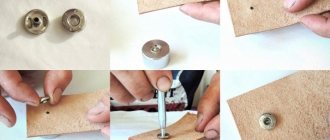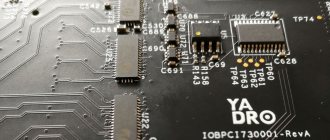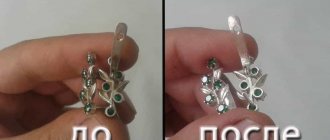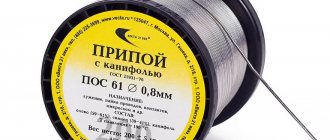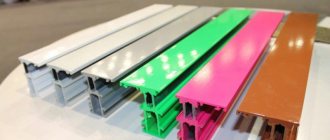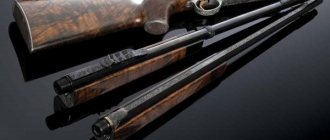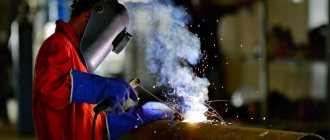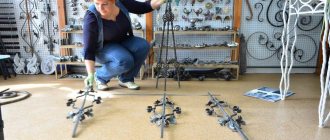Russian legislation divides civilian weapons into several categories, including long-barreled smooth-bore (shotguns) and long-barreled rifled (rifles/carbines). And if citizens are allowed to load cartridges into a smoothbore, then with everything else the situation is murky.
On the pages of specialized forums, shooters with varying degrees of legal training defend the position “what is not prohibited is permitted” to the point of hoarseness and massacres, but when caught by police officers, they quickly lose their fighting spirit.
The question arises: why make your own cartridges at all? Why not buy it in a store?
Money loves the bill
There are several reasons, the first is economic. The store may not have the ammunition you need for sale. Since the early 2000s, our arms market has presented a quite encouraging picture: almost everything from legal long-barreled weapons could be purchased. European and American manufacturers have become a strong presence in hunting stores, displacing domestic shotguns and rifles. This was especially felt in the segment of hunting rifled weapons with manual reloading: at that time, Russian factories offered only Los, Bars carbines and the Old Testament Mosin rifles. At the same time, Remington and Mossberg products, already equipped with optical sights, were cheaper than the stock “Moose”.
Back in 2013, an American Mossberg 100ATR with a Bushnell sight already installed cost 25-29,000 rubles in a store. Domestic “Moose” is 4-5 thousand more expensive.
Along with imported rifles, new cartridges also came to the Russian Federation. Greater power, accuracy, flatness and workmanship distinguished them favorably from the usual line of ammunition. But since September 2014, the same United States has not issued or renewed a single license for “arms” trade with Russia. As a result, the people, who were cheerfully buying weapons of exotic calibers, began to think: what to do with this property now?
An example from life: at one time I came across an American Marlin carbine inexpensively. I have long wanted something powerful enough for driven hunts for elk and wild boar, and the lever action manual reloading played its role (like in a movie about cowboys!) - in general, I took it.
.444 Marlin Carbine
Now imagine: there is only one option on the market for the required caliber cartridge - .444 Marlin, and it costs 350 rubles apiece (and don’t forget about the shipping costs and waiting time).
.444 Marlin cartridge
To shoot a gun well, you need to do it a lot and often. During Saiga training, I burn one and a half hundred rounds of 5.56x45 mm cartridges, which cost 9.5 rubles. The same amount of .444 ammunition will cost 52,500 rubles. On the economic side, everything is clear.
The second reason is the opportunity to make “your own cartridge”, ideal for your weapon and conditions. The rifling pitch of the barrel, the degree of wear, the weight and shape of the bullet are many factors that ensure an accurate shot. A well-assembled cartridge, weighed on all sides and measured, will give better results than a gross, factory-made one.
How does a collet chuck work?
We'll tell you how a collet chuck works, which is used on lathes and hand tools.
The equipment consists of several collets and a self-clamping nut, which applies pressure to the end of the cartridge. Due to the applied force, the collet moves into the sleeve, decreasing in size, and its petals are compressed and securely fasten the tool shank or the workpiece. To remove the workpiece, the nut is unscrewed, thereby increasing the diameter of the collet.
The main advantage of the equipment is its ability to be perfectly centered, which is why the tool fixed with their help has minimal radial runout. And there is no need to use keys to operate the clamp.
Why not?
Year after year, amendments to the Weapons Law (Law on Weapons) met with opposition from deputies. They explained their reaction by the fight against terrorism, support of Russian ammunition factories, concern for the health of Russians, etc.
They tried to explain to legislators that terrorists do without official purchases, that cartridge factories live and prosper by supplying their products for export, and not to the neutered Russian market, that defects also happen with gross cartridges, that citizens of the Russian Federation have long and successfully “rolled themselves” as rifled and smooth-bore ammunition - to no avail. “The Russians are not ready!”
True, the Russians did not know about their unpreparedness and therefore long ago mastered the reload process. Moreover, the accessories for it were bought quite legally. Gunpowder, primers - specifically for rifled weapons - dies and machines for equipment, as well as much more, have been on the shelves for a long time.
A typical page of an online weapons store with accessories for equipping ammunition
And this is gunpowder for rifled weapons, which is still sold in the same stores.
Everything is. But gun owners (from the point of view of our police) are criminals: from hunters to sports shooters, including high-precision snipers. Have you heard about the recent domestic long-range shooting record? The shooter hit a target with a rifle that was more than 4 kilometers away. Ammunition - .408 CheyTac. Is it possible to assume that the cartridge was not assembled by hand, but simply bought in a store?
.408 CheyTac Ammo
Domestic ammunition manufacturers will not make exotic ammunition - it is unprofitable. And there is nowhere to legally buy cartridges.
In this case, the situation reaches the point of idiocy. Let's say I buy factory ammunition at a store. I know that the weight of the bullet and powder charge is “walking”, I want to carry out control measurements at home. To do this I need to disassemble the cartridge.
Do I have the right to buy a cartridge? Yes. Do I have the right to buy equipment for this operation? Yes. Do I have the right to disassemble the cartridge, measure the bullet, weigh it - and the gunpowder? Yes. Do I have the right to remove or add extra gunpowder and put the cartridge back together? No.
Here's another good joke. A new cartridge, .366TKM, is being actively promoted on the Russian market. Smoothbore weapons chambered for this cartridge are very specific - re-barrel SKS carbines and a Kalashnikov assault rifle. Let's look carefully at the pictures.
These are not SKS and AKM, these are VPO-208 and VPO-209, smoothbore guns.
But these are 7.62x39 mm cartridges for rifled weapons (those that are taller) and .366TKM for VPO208/209 shotguns. Moreover, the source material for the .366 is machine gun casings; they simply widen the barrel.
But this is a very common and inexpensive American machine for loading Lee Challenger ammunition, on which you can rivet cartridges of both named calibers.
And even the matrices (special mandrels for cartridges) of these two cartridges are outwardly identical.
But. You can load .366 cartridges, but not 7.62x39.
Attaching the collet chuck to the machine and hand tools
The collet chuck is mounted and centered on the lathe spindle. Note that the diameters of the cartridges and methods of their installation are standardized. The most common spindle end designs include Type C and Type D (cam-lock) fasteners. Also, to install collet chucks, flanges and faceplates are often used, which are placed on the spindle.
Now we will tell you how to center a collet chuck on the motor shaft of a hand tool (electric drill). The adjustment is carried out in two planes, and first the runout is eliminated in one plane, then in the other. Work progress:
- Fix the drill on the table (in a lying position).
- Rotate the chuck until the desired pair of bolts is parallel to the table.
- Rotate the chuck 180 degrees and note the deflection of the chuck.
- Eliminate wobble by tightening and loosening a couple of screws.
Do the same with the second pair of screws. To make the deviation in two planes more noticeable, use a long drill.
What about abroad?
Abroad, cartridges are loaded independently. In Germany, a shooter has the right to buy factory-made ammunition for weapons. If he wants to do reloading, then at the nearest shooting center he needs to take special courses that will teach him about the intricacies of loading ammunition both for modern weapons and for muzzle-loading “replicas” for black powder. After this, the applicant receives a certificate of trustworthiness (not free, of course). Then he acquires a license. And this document already gives the right to purchase gunpowder in stores. The Germans do not regulate the purchase of all other equipment (presses, matrices, etc.) in any way - buy what you want. There is, however, a limit on the amount of gunpowder purchased. But you can equip cartridges of any conceivable caliber and in any quantity, without restrictions.
Anton Zheleznyak Technical and engineering expert
But in Latvia there are no problems with reloading - it is allowed for hunters and athletes. Rewrite at least one barrel “for sport” and even start a factory in the basement, the main thing is for yourself. If homemade cartridges are handed over to someone else, both will have problems.
Additional accessories
When turning thin-walled products or working with fragile wood, metal fastening rings are used. Having the skill of handling metal, you can make them yourself. Also paired with type C cams, screw inserts can be used that screw into a hole pre-drilled in the part. Chucks designed to solve specific woodworking problems:
- cam with independent adjustment - for eccentric turning;
- collet - clamps round workpieces when tightening the petals of a conical collet with a coupling nut. Has a small capture range;
- cylindrical - a tube with three or more threaded fasteners around its circumference; vice - for gripping rectangular workpieces. The parallel jaws are compressed by a screw;
- vacuum – for finishing. It works due to the difference in air pressure created by the pump;
- drilling – for fixing drills. Attached to the tailstock quill.
Set of driving cartridges MK2
So what now?
Let's return to our native aspens. Today, none other than Vladislav Reznik, an authoritative man, a passionate hunter - and, for a moment, a multimillionaire - has taken on the task of pushing through amendments to Russian legislation. This time, a positive response to the initiative was received from the government of the Russian Federation, signed by the deputy chairman of this body, S. Prikhodko, albeit with a reservation:
“The provided opportunity to independently equip cartridges for sporting firearms with a smoothbore gun and firearms with a rifled barrel affects tens of thousands of commercial hunters, athletes, and residents of indigenous peoples who extract biological resources for food.”
“The implementation of the bill will significantly solve problems, including those related to the implementation of professional activities, and will reduce the financial costs of these categories of citizens.”
“In order to ensure control over the quality of self-loading of cartridges for rifled weapons, the bill should include rules aimed at the need to educate citizens on the rules for safely loading cartridges for firearms with a rifled barrel.”
The gentlemen of the deputies attacked the sick - the fate of the indigenous small peoples. Where to go?
And... accepted on November 15, 2022.
Charging using the UPS5 press
This universal device is essentially a cunning press that allows you to crimp cartridges with a “star”, it can also remove primers and insert new ones in their place, and press wads (Figure 3).
In addition to this, the equipment set for 12 gauge cartridges includes:
- Support cone, cone, also known as pestle and funnel.
- Sleeve and die for star-shaped packaging.
- Needles for removing spent igniters.
- Cup for inserting new capsules.
The kit also includes attachments for 12-gauge cartridges: a standard star-type crimp, a crimp ring for the bottom of the clip, for final pressing of the ammunition.
Main material
The next question is what to make a homemade lathe from? The answer seems obvious: made of metal, after all, the machine cannot be weaker than the workpiece? How did the primitives drill into stone with wood? How did the ancient Egyptians use wood and copper (there was no bronze yet) to build pyramids? And see above about the main issue of machine tool building.
A lathe for processing wood can be made of metal (pos. 1 in the figure), metal-wood, pos. 2, from scrap materials with minimal use of metal, pos. 3 and even... without a frame, pos. 4. So, on any of them, a sufficiently experienced and careful craftsman can regularly work for a long time with maximum precision for wood. Wood is not only a noble, but also a grateful material.
Homemade wood lathes from various materials
What tree?
Yes, but what kind of wood should I take? The best is oak without defects, seasoned, having undergone complete natural shrinkage and shrinkage. Lathes made of high-quality oak 100 or more years ago are still in operation. As for homemade work, the bed and headstocks of an oak (literally) machine are made very simply, see below.
If there is no oak lumber of suitable quality, then you can get by with ordinary construction pine, but the frame will have to be made according to a frame-beam power structure. In Anglo-Saxon countries, where oaks have long been registered individually, such home lathes are very common. Drawings of an “English” wood lathe with a frame made of ordinary timber are shown in Fig; dimensions in inches. This is actually an ancient foot-operated machine with a crank, adapted for an electric drive. To return it to a non-volatile form, it is enough to extend the middle stand of the frame to the bottom, place it on a paw and mount the pedal with a connecting rod, crank and flywheel, see above.
Drawings of a wood lathe with a frame made of ordinary construction lumber
Types of universal devices
Modern manufacturers offer users an extensive range of lathes. Among the most popular, the following types can be distinguished: turning-screw-cutting, turning-milling, turning-carousel, turning-turret.
Screw cutting machine
A special feature of this type of equipment is the presence of a tailstock quill stroke. Thanks to this, it is possible to equip it with a drilling chuck. This allows the machine to be used not only for turning operations, but also for turning workpieces with different profiles, leveling, making grooves and recesses in workpieces, cutting sizes to the required specifications, and drilling holes. For this, dies, cutters or taps can be used.
If the choice fell on a screw lathe, it is recommended to take into account the following properties:
- The size (diameter) of the workpiece, which can be calculated by measuring the distance from the bed to the axis of the device.
- Maximum part length. This figure in most models does not exceed 2033 mm.
- Machine weight. With increasing weight, the level of rigidity of the device increases, which has a direct impact on the accuracy of the operation performed. You can purchase units whose weight ranges from 600 to 4250 kg. Such machines are very popular both in enterprises and in home workshops.
Milling device
Using this type of equipment, you can turn workpieces not only from ferrous and non-ferrous metals, but also from plastic and wood. The design of the device combines two types of machines (milling and turning).
A universal turning and milling machine can be used to perform such types of operations as continuous turning, thread cutting, chamfering, fillet cutting, cutting straight and curved grooves, and drilling holes. This became possible due to the presence of a milling part located in the vertical plane of the frame. Such machines are often installed in school workshops.
The popularity of turning and milling equipment is due to the presence of its inherent advantages:
- Availability. The combination of two types of machines leads to cost savings.
- Compact size. It can be installed in a workshop with a small area.
- Possibility of mounting a variety of additional elements (cutter, drill, tap, reamer, cutter, chisel).
When choosing this type of equipment, it is necessary to take into account the following characteristics:
- distance between centers;
- workpiece size;
- diameter of crosscut and end mills.
The presence of these qualities determines the popularity of turning and milling equipment among users.
Carousel machine
Machines of this type are mainly used for processing large diameters (more than 2000 mm) and sizes in large enterprises.
Revolving unit
The main purpose of this type of device is to process workpieces made from calibrated rods. The peculiarity of the machines is that the cutting mechanism is mounted on a rotating drum.
https://youtube.com/watch?v=QkSWxDsgXVw
Machine tools with numerical software
When working with this type of machine, minimal operator participation is required. It is also worth noting the ability to perform all types of operations with high precision.
Each of the above types of metal lathes has design features and purpose.

